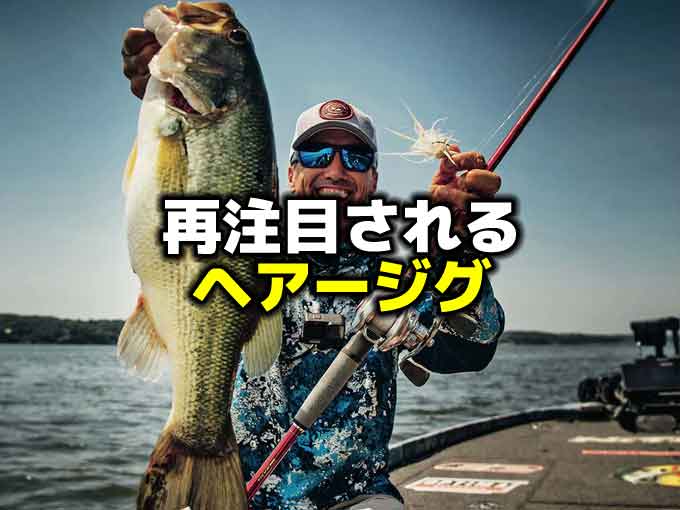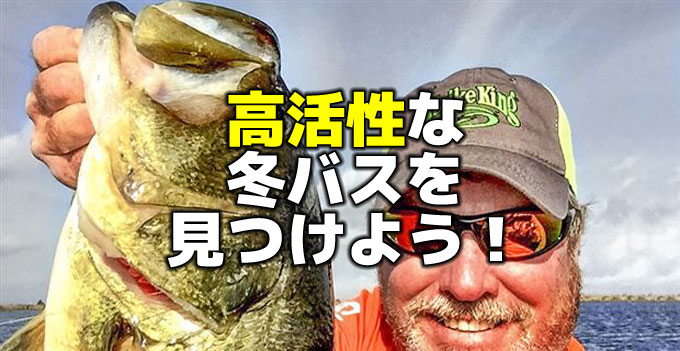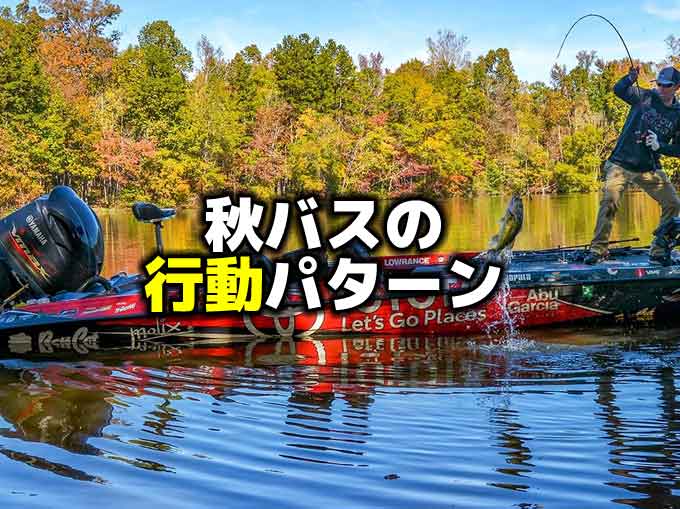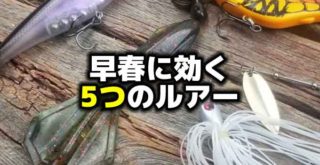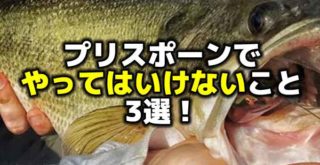スイムジグはどこで生まれたのか

Photo by midwestoutdoors.com
こんにつは!店長の小山です!
本日は海外サイトより、”SWIM JIGS: WHEREVER THEY CAME FROM, THEY WORK”という記事を引用してご紹介いたします。
引用先:midwestoutdoors.com”SWIM JIGS: WHEREVER THEY CAME FROM, THEY WORK”by BUCK MALLORY ,JUN 1, 2015(海外サイトです)
スイミングジグの釣り、皆さんはお好きでしょうか。
私の個人的なイメージなのですが、琵琶湖で大ブレイクしたことで初めてその釣りを知ったことから、これまでは特に琵琶湖をメインとした関西っぽい釣りかなと思っていました。
ヘビータックルを使って重いジグでウィードの上っ面を一定スピードで巻いていると、デカいバスが追って来てコツ、コツ、ドーンと来るという一連の流れはかなりストロングで、関東で成立するのかなあ、と思っていたのです。
しかし、そんな私の不安など当然のごとく下手の勘繰りに終わり、皆さんの釣果を見ていると全国どこででも、色んなアレンジや工夫がなされ、よく釣ってらっしゃいます。
新たにチャターベイトというスイムジグの仲間も登場していますし、極端なことを言えばトレーラーをつけたスモラバを巻いて泳がせて釣るのであればそれもスイムジグですし、それであれば野尻湖のスモールマウス相手にも使用し得意としているロコアングラーさんもいらっしゃるんですよね。
この記事はアメリカ中西部を中心とした総合アウトドアメディア「MID WEST OUTDOORS」の記事で、そんなスイムジグの歴史を紐解きながら、効果的な使用方法にまで言及されています。
私自身の勝手なイメージにより取っ掛かりが遅くなってしまい苦手意識のあるジャンルであるこのスイムジグというルアー、もし同じようにあまりやったことのない方がいらっしゃるようでしたら、読んでみてはいかがでしょうか。
スイムジグはどこから来たのか
Surf online to find out where swim jigs for bass came from and you’ll likely be able to narrow the source down to two places: The Mississippi River north of La Crosse, Wisconsin, and the Coosa River, in Alabama. Seems that a fellow named Tom Monsoor ruled tournaments in the La Crosse area some 30 years ago, and eventually spilled the beans that swimming a jig through shallow weeds was his top presentation. Supporters of the Coosa River origin claim other folks down in Alabama started purposely swimming a jig about the same time.
Most people fishing with this simple tactic of swimming a jig for bass these days probably could not care less if the technique started in Wisconsin or Alabama. Wherever it came from, it flat out works. Not only is it effective, but it’s one of those techniques that pretty much works any time there isn’t ice covering the lakes. Oh, and it’s deadly in some river situations, too.
Swim jigs became mainstream for bass probably about seven years ago when some big Bassmaster events started getting won with them. I wish I would have figured it out a long time ago. Even as a kid fishing tournaments with my dad or my Uncle Jim, there were lots of times that I’d be working a jig back in the traditional, lift, shake, lift retrieve along the bottom, but the bass didn’t bite until I started cranking the jig in fast to make another cast. It never occurred to me to start swimming that jig as soon as it hit the water.
These days, swimming a jig is a standard presentation for me, and I almost always have a swim jig rigged and ready to go up on the front deck of my Nitro bass boat.
インターネットでスイムジグがどこから来たのかを調べると、アラバマ州のラクロス北部のミシシッピリバー、ウィスコンシン~クーサリバーの2つの場所に絞り込むことができます。トム・モンスール(Tom Monsoor)という名前の人物が約30年前にラクロス地方のトーナメントを勝ち、その時にシャローのウィードエリアでジグをスイミングさせていたのがメインだったという秘密が漏れてしまったのだそうです。クーサリバーを起源と主張する人は、アラバマ州ではみんながだいたい同じ時期にスイミングジグを始めたと主張しています。
多くの人々はバスに対してジグをスイミングさせるというシンプルなテクニックについて、ウィスコンシンかアラバマから始まったかなど、気にすることはありませんでした。これがどこから来たものであろうと、巻くだけなのです。またこれが効果的であるだけでなく、湖が凍っていないときであればいつでもできるテクニックの1つです。そしてそれは川であっても効果的なのです。
スイムジグは、たしか約7年前、バスマスターの大きな大会のウイニングルアーになってから、バスフィッシングの主流ともなったはずです。ただ私は、もっとずっと前からこれを知っていたのです。私のお父さんやジムおじさんと一緒に参加したキッズトーナメントで、私は伝統的なリフト、シェイク、リフトをボトムでやっていたのですが、次のキャストに移ろうとしてジグを巻いて回収していた時にバスがバイトしてきました。それまでジグを泳がせて使うなどと思ったことはありませんでした。
今日では、スイムジグは私にとって標準的なプレゼンテーションであり、私はほとんどいつもスイムジグをリグっておき、バスボートのフロントデッキに置く準備ができています。
スイムジグのやり方とタックル
For anyone who hasn’t tried one, or tried one without success, let’s talk about the basics. The swim jig is one of those lures that you’re best off not overthinking. Usually, catching fish on one is a simple matter of casting it out and winding it back at a steady pace, much like you would a spinnerbait. Generally, you want it either up near the surface looking like a baitfish to the bass below, or coming through cover into a bass’s face and causing a reaction strike. Oh, let’s add slow-reeling it along the bottom to mimic a crawfish or goby or other tasty bottom-dweller puttering along.
Actually, you can never be too creative about where to throw one, and what kind of trailer to put on it.
For instance, take this river scenario: It’s common knowledge that trout like to hide underneath washed-out embankments; not-too-common knowledge that bass do the same thing in warmer rivers. One of the best ways to catch these bass is to position your boat (or actually wade) downstream of the undercut, as close to the bank as possible and cast a swim jig upstream, parallel to the bank. I like using a Strike King Hack Attack Heavy Cover Swim Jig, 1/4- to 5/8-ounce size, with a Rage Tail trailer, which really thumps. Reel just fast enough to keep the trailer moving as you come downstream and you might be surprised at how many bass you’ll catch out of a spot like this. Sure, you could use a crankbait in this situation, but the swim jig is far less likely to get hung up as you bring it downstream.
Narrow-nose or “bullet-head” swim baits along the lines of the KVD Swim Jig from Strike King and the Stealth Jig from Freedom Tackle are excellent for pulling through weeds. One of the KVD models has rattles on it, which cause a nice little commotion that seems to trigger strikes. The Stealth Jig from Freedom Tackle is basically a swimbait head with a skirt and a big offset, wide-gap hook onto which you ‘Texas rig’ a trailer. It’s nice and weedless, and the hook is actually on a corkscrew sort of arrangement that allows it to swivel, which adds some wiggly action with a swimming plastic trailer.
Most of the time I throw swim jigs on a heavy-action rod, with the G.Loomis, 7-foot, 6-inch Jig and Worm Rod (model GLX 904) my favorite. For the reel, I like the Shimano Curado with a 6.4:1 retrieve ratio. That’s a fairly fast retrieve, which is important with swim jigs because of how bass sometimes hit it. They frequently smoke it from behind, and keep swimming at you—all of a sudden you just feel kind of “nothing” as you reel. When this happens, crank like mad until you catch up with the fish and then set the hook. If you make a big swing before your reel picks up the slack, your rod tip will be behind your head, and you’ll have to try and drive the hook point home with just the reel handle. This doesn’t work very well.
For line with a swim jig, 14-pound-test fluorocarbon is a good compromise between invisibility and durability around the kinds of brush you often throw this thing into.
まだ試してみたことがない人、うまくいかなかった人のために、基本について話しましょう。スイムジグは、深く考えすぎないほうがうまく行くタイプのルアーのひとつです。通常、釣るための方法のひとつは、スピナーベイトのように投げたら一定のスピードでただ巻いてくるという簡単なものです。一般的には、下にいるバスにベイトフィッシュのように見えるよう、表層付近を通すのが望ましく、あるいは、バスの目の前に来るようカバー際を通してリアクションバイトを引き起こすことが必要です。そうだ、ザリガニやハゼ系の魚などの美味しい底生生物がウロウロしているのを模すようにボトムをゆっくり巻くというのも加えておきましょう。
ただ実際には、どこに投げるべきか、どんな種類のトレーラーにするのか、それほど工夫はいりません。
例えば、この川での状況から考えてみましょう:トラウトは流れ落ちる堤防の下に隠れるのが好きです。温かい川ではバスも同じことをするということはあまり知られていません。こういったバス釣る最善の方法の1つは、えぐれた岸の下流のできるだけバンクの近くにボートポジション(またはウェーディング)をし、上流にスイミングジグをバンクに平行に流し込むことです。私はストライクキング・ハックアタックヘビーカバースイムジグの1 / 4~5 / 8オンスのサイズにレイジテールをトレーラーに使用して、ドーンと来る釣りが好きです。下流に向かって流れてくるのにトレーラーがちゃんと動くほど十分な速さで巻くようにしてください。こういった場所から多くのバスをキャッチできることに驚かれることでしょう。確かに、このような状況ではクランクベイトを使用することもできますが、スイムジグは下流に向かって巻くときに根掛かりしづらいものです。
ストライクキングのKVDスイムジグとフリーダムタックルのステルスジグのような尖った形状やバレットヘッドのルアーを泳がせるのは、ウィードのすり抜け性能に優れています。KVDモデルにはラトル入りのものもあり、バイトを誘発するノイズを発します。フリーダムタックルのステルスジグは基本的に、スカートとワイドゲイプの大きなオフセットフックで、テキサスリグのようにトレーラーを付けます。これはウィードレス性能が高く、フックはスクリューロック式で、スイベルによりトレーラーの泳ぎにわずかなウィグリングを加えます。
多くの場合、私のお気に入りのG.ルーミス、7フィート6インチのヘビーアクションのジグ&ワームロッド(モデルGLX 904)で投げています。リールは6.4:1のギア比のシマノ・クラドが好きです。かなり速くリトリーブしますが、バスが時々当たってきてからがスイムジグにとって重要です。バスはよく、背後から当たっていたのに、リールを巻いていると突然「フッ」となにも感じなくなります。これが起きたら、魚の感触が得られるまでおもいっきりリールを巻き、そしてフッキングしてください。ラインがたるんだままフッキング動作に入ってしまうと、ロッドティップが頭の後ろまで来てしまい、リールのハンドルだけでフックポイントを貫通させなければならなくなります。これではうまくいきません。
スイムジグ用のラインとしては、14ポンドぐらいのフロロカーボンが強度と見切られにくさのちょうどいい妥協点ではないでしょうか。
トレーラーは
As for trailers, some imitate crawfish and some are just paddle-tail swimbaits. Both of them work, and usually, both are imitating baitfish and not crawfish. That’s because crawfish don’t swim up in the water column where you’re usually pulling these lures. The exception, of course, is when you’re slow rolling a swim jig right on bottom, which is where the crawfish hang.
So when picking your trailer—and lots of things from the Strike King Rage Lobster to a plain, 3-inch Kalin Grub make great trailers—pick a color that matches the primary forage. In Michigan, lots of times, that’s going to be bluegills, perch and sunfish. In lakes connected to the Great Lakes, you might go with a more silver presentation to mimic alewives and shiners.
Color choice is also important as to where you’re fishing in a specific lake. If you’re pulling your swim jig through weeds, a darker panfish color is usually the best way to go. If you’re buzzing it up on top close to the surface, it often pays to opt for a lighter color that blends with the silver, shimmery surface the bass are looking up into. You don’t want that fish to see your bait all that clearly, and so a silvery, pearly white bait works better most of the time.
One of the really great things about fishing a swimming jig is not just how well it catches fish, but how many different combinations of colors and trailers you can put together to find the one that works best in any given body of water. Start with something that matches the hatch of prey fish and that moves some water to send out vibrations that feel like a fleeing meal to a bass. Then tweak it from there. Stick with a swim jig, tweak the colors and action, and odds are good you will find one that catches fish.
トレーラーは、ザリガニ系のものもあれば、スイムベイトの場合もあります。どちらでも構いませんが、通常は両方ともベイトフィッシュを模しており、ザリガニを意識しているわけではありません。これは通常、このルアーを引いてくるような中層レンジでザリガニが泳いでいるということがないからです。もちろん例外は、ゆっくりとボトムに沿ってスイムジグをスローロールさせるときです。ここはザリガニがいるところです。
そういうわけで、トレーラーを選ぶとき、ストライクキング・レイジロブスターからカリン・3インチプレーングラブなどいろいろなトレーラーがありますが、メインベイトに合わせたカラーを選ぶようにします。ミシガン州では、多くがブルーギル、パーチとサンフィッシュになるでしょう。五大湖にちかい湖では、エールワイフやシャイナー系(ベイトフィッシュ)を意識して、よりシルバー系の強いプレゼンテーションになるでしょう。
色の選択は、湖の特定のエリアで釣るときについても重要です。スイミングジグをウィードエリアで使うなら、通常はより暗い色のパンフィッシュカラーが最善です。表層近くを通すのであれば、バスが見上げた時にシルバーのキラキラとした水面と混じり合うような明るい色を選ぶのがいいでしょう。魚にルアーをはっきりと見られることは避けたいため、シルバーパールなどの白系のルアーが最もよく効きます。
スイムジグで釣ることについての本当に大切なことの1つは、それ自体で魚が釣れるということではなく、色やトレーラーをどのように組み合わせてそのフィールドで最も効果的なものを見つけることができるかです。バスのフィーディングから逃げる獲物が出す波動に近い波動を出すマッチザベイトから始めて、それから微調整していってください。スイムジグのカラーやアクションの微調整にこだわっていけば、魚が釣れる気配が濃くなっていきます。
チャターベイト
Swim jigs evolved into the Chatterbait from Z-Man, which is a jig with a blade in front of it that gives the jig body, skirt and trailer a whole lot of action. Strike King’s version is called the Pure Poison Swim Jig. These can be great lures about any time of year, but especially in cold water, when fish want something moving slowly, but with lots of action.
That’s what these baits provide—a lot of action. I’ve fared well with the black-bladed Chatterbait, and have found that sometimes toning down the flash of the Pure Poison Swim Jig with a black magic marker can make that lure get more hits.
Like the standard swim jig, there’s no big secret to effectively fishing the bladed swim jig. A standard chunk and wind procedure, dropping these baits into prime, mainly shallow bass habitat will get results.
ジグのボディにスカート、トレーラーにたくさんのアクションを与えるため、ジグのフロントにブレードを付けたものが、スイムジグが進化したZ-Man・チャターベイトです。 ストライクキングのものは、ピュアポイズンスイムジグと呼ばれています。 これらは特に低水温期、釣りはスローでも、多くのアクションが欲しい時期に素晴らしいルアーとなることがあります。
これはかなり多くのアクションを供給します。 私は黒いブレードのチャターベイトをよく使っていて、時にはピュアポイズンスイムジグのフラッシュを黒いマジックで塗ってフラッシュを和らげることでより多くのヒットが望めることが分かりました。
スタンダードなスイムジグのような、大きなシークレットはチャターベイトにはありません。バスがメインの生息地とするシャローで投げて、タダ巻きすることこそが、結果に繋がるでしょう。
いかがでしたか。
すみません、スイムジグの歴史なんてほとんど触れられていませんでしたね(笑)。でも、使い方や考え方はよく分かりました。
スイムジグの類は深く考えずに、投げて一定速度で巻く。これが一番結果が出やすいということなんですね。
ウィードの中やボトム付近を通すことなんかもあるはずなので、そういう場合はさすがに一定速度をキープし続けるのは実質的に不可能ですが、意識としては一定速度で使っていればいいのでしょう。
そしてここにも書いてありましたが、このルアーを使い込んでいる方に聞くと良く言われるのが、「気配が消える」とか「感触がなくなる」という言葉です。ルアーの存在や巻き抵抗が文字通り「フッ」と消えるバイトがあるのだそうです。
私の場合は先に書いた通り、巻いていると初めにコツ、コツ、というアタリがあって、その後グーンとひったくられるバイトしか今まではなかったのでフッキングは楽勝なのですが、この「消えるバイト」は非常に厄介そうです。冷静にならないとその場でロッドを振ってしまいそうで、それは絶対にやってはダメなんだそうです。
しかもでかいやつほど、そんなアタリをするのだそうです。
これがきっとスイムジグの一番難しいところで、一番楽しい瞬間なのではないでしょうか。
私はまだそこのところが未経験ですので、なんとももどかしい、悔しいところです。
もっとやり込まないといけないのでしょうが、なかなか、そういうフィールドが近くになくて本当にもどかしいです(笑)
皆さんは消えるバイト、もう経験済みなのでしょうか。
うらやましいです。
私も頑張ります。
それでは、また。
毎度ありがとうございます!







